Glossary
A-E
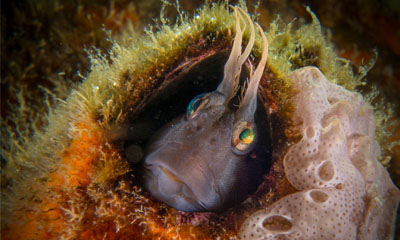
Algal blooms – a sudden proliferation of microscopic algae in water bodies, stimulated by the input of nutrients such as phosphates.
Aquaculture – commercial growing of marine or freshwater animals and plants in water.
Aquifer – a geological formation that is made up of porous materials such as sand and gravel that allows the storage and transmission of significant volumes of water.
Ascidian – sea squirt, a small sessile, filter feeding marine animal.
Ballast water – seawater pumped into a ship’s hold to steady it. When the water is released in other oceans the organisms in it may become pests.
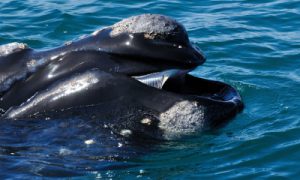
Benthic – plant and animal life associated with the aquatic floor and sea bed.
Benthos – organisms living on or in association with the sea floor.
Bioaccumulate – concentration of substances (especially toxicants) in the tissues of plants and animals.
Biodegrade – a process of decay using natural elements such as water, air, sun and micro-organisms.
Biodiversity – variability among living organisms from all sources (including terrestrial, marine and other ecosystems, and ecological complexes of which they are part) and includes: diversity within species and between species, and diversity of ecosystems.
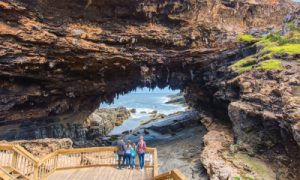
Biofouling – or biological fouling, is the undesirable accumulation of micro-organisms, plants, algae, and animals on submerged structures, especially ships’ hulls.
Bioindicator – species or chemicals used to monitor the health of an environment or ecosystem. They are any biological species or group of species whose function, population, or status can be used to determine ecosystem or environmental integrity.
Bioregion – an area of land or sea defined by common patterns of natural characteristics and environmental processes (such as geology, landform patterns, climate, ecological features and plant and animal communities). Generally, a system of related interconnected ecosystems.
Biota – all of the organisms at a particular locality.
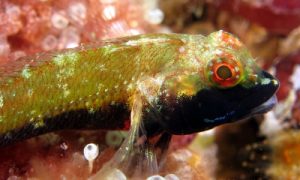
Bycatch – the catch of species other than those targeted by fishing activity.
Bryozoan – colony forming marine animal.
Calcareous – refers to a sediment, sedimentary rock, or soil type which is formed from or contains a high proportion of calcium carbonate in the form of calcite or aragonite.
Catchment – the area determined by topographic features within which rainfall will contribute to runoff at a particular point under consideration.
Cetaceans – marine mammal order containing whales, porpoises and dolphins.
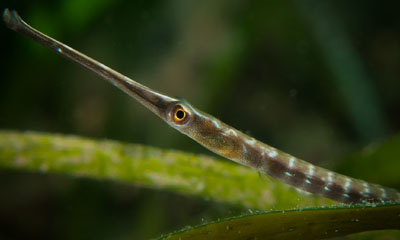
Climate – the average weather for a particular region and time period.
Cnidaria – a group of organisms that includes anemones, corals, jellyfish and hydroids sometimes known as ‘stingers’. These organisms usually consist of a ‘polyp’ body with a mouth surrounded by tentacles.
Coastal geomorphology – study of the science of coastal landforms.
Colluvial – a loose deposit of rock debris accumulated through the action of rainwash or gravity, at the base of a gently sloping cliff or gradient.
Conservation – in relation to biodiversity: the protection, maintenance, management, sustainable use, restoration and enhancement of the natural environment. In relation to natural and cultural heritage: implies keeping in safety or preserving the existing state of a heritage resource from destruction or change.
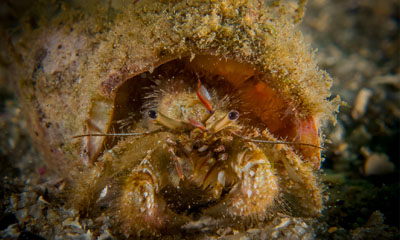
Continental shelf – the submerged shelf of land that slopes gradually from the exposed edge of a continent to where the drop-off to the deep seafloor begins.
Demersal – found at or near the bottom of the sea or a lake.
Diffuse pollution – pollution from a source, which is not easily identified at a particular place.
Diurnal – the systematic changes of value that occur during the average day.
Dodge tide – where there is no tidal movement, the tide may remain fairly stationary for days.
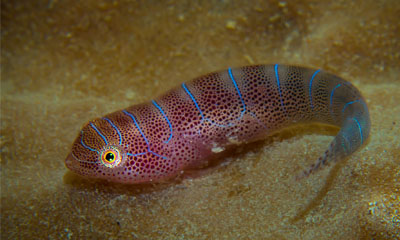
Echinoderms – members of the phylum Echinodermata such as sea stars, sea cucumbers, feather stars, basket stars and sea urchins. This whole group has the shared feature of a body plan based around a ‘pentaradial’ symmetry – a form of body plan based around the number five.
Ecosystems – communities of plants, animals and microbes (microscopic organisms) that are interacting with one another within their physical environment. They are comprised of a variety of habitats, the species that live within them and the processes between the living (biotic) and non-living (abiotic) components.
Eddy – a rotating or whirling movement of air or water.
Embayment – a small bay or any small semi-enclosed coastal water body whose opening to a larger body of water is restricted.
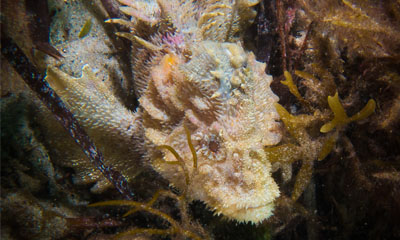
Endemic – species regularly or only found in a particular geographic location.
Epibiota – organisms growing on other organisms, but not obtaining food, water or minerals from it. Most often it is some kind of organism attached to a plant and these are called ‘epiphytes’.
Estuary – a partially enclosed coastal body of water, including its ecosystem processes and associated biodiversity, which is either permanently, periodically, intermittently or occasionally open to the ocean within which there is a measurable variation in salinity due to the mixture of seawater with water derived from on or under the land.
Eutrophication – a process by which waters become enriched with nutrients, primarily nitrogen and phosphorus which stimulate the growth of aquatic flora and/or fauna.
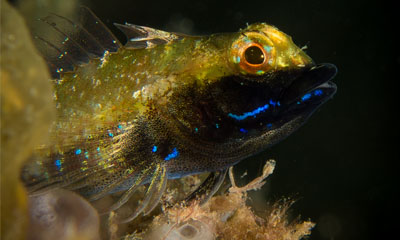
Evaporation – the process of liquid water becoming water vapour, including vaporization from water surfaces, land surfaces and snow fields, but not from leaf surfaces.
F-K
Filter feeder – an animal that eats by filtering or straining small particles of food from the water.
Foraminifera – these organisms belong to a kingdom of life called the Protista or Protozoa. These are often the organisms that do not belong to the other four kingdoms – plants, animals, fungi, bacteria. The Protista are a diverse group of organisms and, as yet, the relationships between all the groups in this kingdom have not been sorted out. The Foraminifera is a group of tiny, shelled organisms, usually less than or about 1 mm, but occasionally larger. They are primarily marine.
Gastropods – largest and most varied single-shelled snail-like molluscs.
Geology – the study of earth processes.
Gradient – a rate of change of a variable with distance; a regularly increasing or decreasing change in a factor, such as salinity.
Greenhouse effect – a term used to describe the role of atmospheric trace gases – water vapour, carbon dioxide, methane, nitrous oxide, ozone – in keeping the earth’s surface warmer than it would be otherwise.
Groundwater – water beneath the surface.
Habitat – is the physical place or type of site where organism, species or population naturally occurs together with the characteristics and conditions that render it suitable to meet the life cycle needs of that organism, species or population.
Heavy metal – metallic element with relatively high atomic mass such as lead, cadmium, arsenic and mercury; generally toxic in relatively low concentrations to plant and animal life.
Hydroids – a group of the phylum Cnidaria, which also includes other ‘stingers’ such as jellyfish, anemones and corals. Hydroids are colonies of minute individual organisms living together.
Hypersaline – water with a salinity that is greater than 40 parts per thousand (ppt). This is in contrast to freshwater, which has a salinity of less than 0.5 ppt and ocean water that is typically 35 ppt.
Invasive species – a species occurring beyond its accepted normal distribution, as a result of human activities, and which threatens valued environmental, agricultural or personal resources by the damage it causes.
Inverse or ‘reverse’ estuary – an estuary that has more saline conditions at the landward end rather than at the seaward end, where evaporation is greater than freshwater input and there is limited exchange with the open ocean.
Intertidal – the zone that is found between low and high tide levels. Also called the ‘littoral’ zone.
Invertebrates – animals without a backbone.
L-P
Littoral drift – is a geographical process in which sediments e.g. sand are transported along the coast due to the actions of breaking waves, currents and winds.
Kelp – large brown algae of the Order Laminariales.
Macroalgae – large (clearly visible) alga, often referred to as seaweed but also includes some freshwater species.
Macrotidal – coastal ocean or waterway with a high mean tidal range, e.g. greater than four metres.
Mangrove – a plant (belonging to any of a wide range of species, mainly trees and shrubs) that grows in sediment regularly inundated by sea water.
Mesotidal – coastal ocean or waterway with a moderate mean tidal range, e.g. between two and four metres.
Microtidal – coastal ocean or waterway with a low mean tidal range, e.g. less than two metres.
Molluscs – the phylum of animals containing snails, slugs, octopus, squid, cuttlefish and bivalves (oysters, mussels and others with two shells).
Niche – the unique environment or set of ecological conditions in which a specific plant or animal species occurs, and the function the organism serves within that ecosystem.
Nudibranch – the order of shell-less gastropods.
Oceanography – study of the ocean, including its physical, chemical and biological aspects.
Pelagic – belonging to the upper layers of the open sea.
Pinnipeds – fin-footed marine animals e.g. seals.
Plankton – a diverse group of microscopic organisms (zooplankton) and plants (phytoplankton) that freely drift in the upper layers of the sea. Phytoplankton are plankton that survive largely by photosynthesising. Zooplankton are planktonic organisms that eat other organisms, usually phytoplankton or other zooplankton. Plankton also includes the free-living larval stages of many benthic (seabed) organisms such as echinoderms, crustaceans, corals, algae, sea squirts and bryozoans.
Pleistocene – a geologic period usually thought of as the Ice Age, which began about 1.6 million years ago and ended with the melting of the large continental glaciers creating the modern climatic pattern about 11,500 years ago.
Pneumatophores – aerial roots of mangroves.
Point-source pollution – pollution from an easily discernible, single source such as a factory or a sewage treatment works.
Prograde – build up of sand resulting in the coastline moving/accreting seaward.
Q-U
Ramsar Convention – the Convention on Wetlands, signed in Ramsar, Iran, in 1971 that provides the framework for the conservation and wise use of wetlands and their resources.
Reefs SA – rocky, temperate reefs in contrast to coral reefs.
Salinity – the concentration of salts in water and/or soil.
Sand movement –
Seagrass – flowering marine plants (monocotyledons – grasses) found mainly in shallow, protected estuarine and marine waters.
Seamounts – a mountain rising from the seafloor that usually does not reach the water’s surface, and therefore is not an island. However, they act as ecological islands, with most seamounts having their own unique community of plants and animals living on it. The most well-known seamounts in Australia are around south-east Tasmania.
Sessile – immobile, sedentary, fixed to a substrate e.g. sea squirts, sponges.
Stromatalites – trace fossils of bacterial communities, occurring as dome or column like structures.
Subtidal – the area of seafloor immediately below the intertidal zone; sometimes called ‘sublittoral’.
Substrate – a surface on which organisms live.
Supratidal – above mean high tide level. It starts at the high-tide line and goes toward dry land; sometimes called ‘supralittoral’.
Sustainable – an activity able to be carried out without damaging the long-term health and integrity of natural and cultural environments.
Taxon, taxa – scientifically recognised species, subspecies, variety or forms of organisms.
Threatened – a species or community that is vulnerable, endangered or presumed extinct.
Threatening process – a process that threatens, or may threaten, the survival, abundance or evolutionary development of a native species or ecological community.
Turbidity – the extent to which the passage of light through water is reduced by suspended matter.
Upwelling – an upward movement of an ocean current from the deep sea.
V-Z
Wastewater – used water; in most cases not suitable for drinking.
Wetland – areas of marsh, fen, peatland or water, whether natural or artificial, permanent or temporary, with water that is static or flowing, fresh, brackish or salt, including areas of marine water the depth of which does not exceed six metres (IUCN 1971).
Page credits
Information: The amazing adventures of Gavin, a Leafy Seadragon educator’s resource and the Living Coast Strategy.
Page banner: Cape Spencer Lighthouse, Innes National Park, Yorke Peninsula. Photo: Ben Goode, Earth Art Photography.
